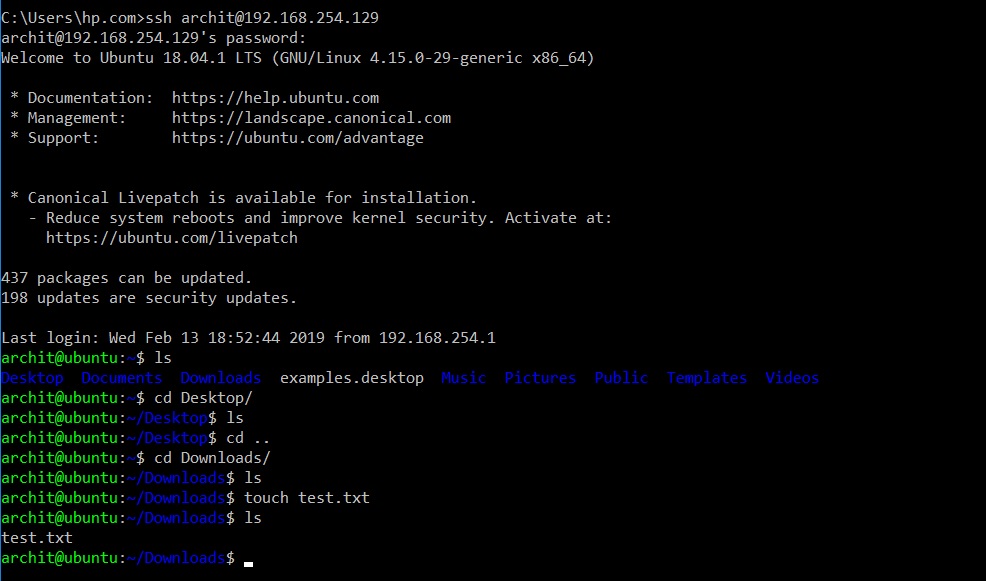Hey there, tech enthusiasts! If you're diving into the world of IoT (Internet of Things), you've probably come across the term SSH Remote IoT Commands. But what exactly are they, and why should you care? Let’s break it down for you. SSH (Secure Shell) is like the secret handshake of the internet—it allows you to securely connect to remote devices and manage them from afar. When it comes to IoT, where devices are scattered across the globe, SSH becomes your trusty sidekick. It’s not just about connecting; it’s about controlling, configuring, and troubleshooting—all with a few commands. So, if you’re ready to level up your IoT game, stick around because we’ve got everything you need to know!
Now, imagine this: you’ve deployed a network of IoT sensors in a remote location, maybe monitoring weather conditions or tracking inventory. How do you ensure everything’s running smoothly without physically being there? That’s where SSH Remote IoT Commands come in. These commands let you access your devices, check their status, update software, and even reboot them if needed. It’s like having a remote control for your IoT ecosystem.
But here’s the kicker: mastering SSH isn’t just about knowing the commands—it’s about understanding how to use them effectively and securely. With cyber threats lurking around every corner, ensuring your IoT devices are protected is crucial. And that’s exactly what we’ll cover in this guide. So, buckle up and let’s dive into the world of SSH Remote IoT Commands!
Read also:Desiremovies Soy Your Ultimate Guide To Streaming Movies Online
Table of Contents
- Introduction to SSH Remote IoT Commands
- Understanding the Basics of SSH
- Setting Up SSH on IoT Devices
- Common SSH Remote IoT Commands
- Securing Your SSH Connections
- Troubleshooting SSH Issues
- Automating SSH Tasks
- Best Practices for SSH Remote IoT
- Useful Tools for SSH Management
- The Future of SSH in IoT
Introduction to SSH Remote IoT Commands
SSH Remote IoT Commands are essentially the instructions you send to your IoT devices over an SSH connection. They’re like the language your devices understand, allowing you to perform various tasks remotely. Whether you’re restarting a service, checking logs, or updating firmware, these commands make it possible.
But why SSH? Well, it’s all about security. Unlike other protocols, SSH encrypts your communication, ensuring that your data remains safe from prying eyes. This is particularly important in IoT, where devices often handle sensitive information.
Let’s say you’ve got a smart thermostat installed in your home. With SSH, you can remotely check its temperature settings, adjust them if necessary, and even monitor its performance—all without leaving your couch. Sounds pretty cool, right?
Understanding the Basics of SSH
Before we dive into the commands themselves, let’s talk about the basics of SSH. At its core, SSH is a network protocol that allows secure communication between two devices. It uses encryption to protect data in transit, making it a go-to choice for remote management.
How SSH Works
Here’s a quick rundown of how SSH works:
Read also:David Goggins The Unstoppable Force Behind Mental Toughness And Beyond
- Authentication: When you connect to an IoT device via SSH, you need to authenticate yourself. This can be done using a password or an SSH key.
- Encryption: Once authenticated, all communication between your computer and the IoT device is encrypted, ensuring no one can intercept your data.
- Command Execution: After establishing a secure connection, you can execute commands on the remote device as if you were physically there.
Think of SSH as a secure tunnel through which you can send commands and receive responses. It’s like having a private conversation with your IoT device, where no one else can listen in.
Setting Up SSH on IoT Devices
Alright, now that you understand the basics, let’s talk about setting up SSH on your IoT devices. This process can vary depending on the device and its operating system, but here’s a general guide to get you started.
Step-by-Step Guide
Here’s how you can enable SSH on a typical IoT device:
- Access the Device: Connect to your IoT device either physically or via a local network.
- Install SSH Server: Most IoT devices come with an SSH server pre-installed, but if not, you’ll need to install one. On Linux-based devices, you can use the command
sudo apt-get install openssh-server. - Enable SSH Service: Once the server is installed, start the SSH service using the command
sudo service ssh start. - Configure Firewall: Make sure your firewall allows incoming SSH connections on port 22 (or a custom port if you’ve changed it).
With SSH set up, you’re ready to start sending commands to your IoT device. But remember, security should always be a top priority!
Common SSH Remote IoT Commands
Now, let’s get to the fun part: the commands! Here’s a list of some common SSH Remote IoT Commands you’ll likely use:
- ssh user@hostname: This command establishes an SSH connection to the remote IoT device. Replace
userwith your username andhostnamewith the device’s IP address or domain name. - ls: Lists the files and directories in the current location.
- cd directory_name: Changes the current directory to the specified one.
- sudo reboot: Reboots the IoT device remotely.
- sudo apt-get update && sudo apt-get upgrade: Updates and upgrades the device’s software packages.
These commands are just the tip of the iceberg. As you become more comfortable with SSH, you’ll discover a whole range of possibilities for managing your IoT devices.
Securing Your SSH Connections
Security is a critical aspect of using SSH Remote IoT Commands. Without proper precautions, your devices could become vulnerable to cyberattacks. Here are some tips to keep your SSH connections secure:
- Use SSH Keys Instead of Passwords: SSH keys provide a more secure authentication method than passwords. They’re harder to crack and offer better protection against brute-force attacks.
- Change the Default Port: Most attackers target the default SSH port (22). Changing it to a non-standard port can help deter casual attackers.
- Limit User Access: Restrict SSH access to only the necessary users. This minimizes the risk of unauthorized access.
- Enable Firewall Rules: Configure your firewall to only allow SSH connections from trusted IP addresses.
By following these best practices, you can significantly enhance the security of your SSH Remote IoT setup.
Troubleshooting SSH Issues
Even with the best setup, things can go wrong. Here’s how to troubleshoot common SSH issues:
Connection Refused
If you’re getting a "Connection refused" error, check the following:
- Ensure the SSH service is running on the IoT device.
- Verify that the firewall allows incoming connections on the SSH port.
- Double-check the IP address or hostname you’re using to connect.
Authentication Failed
If authentication fails, try these steps:
- Make sure you’re using the correct username and password.
- If using SSH keys, ensure the public key is correctly added to the device’s authorized_keys file.
Troubleshooting can be a bit frustrating, but with patience and persistence, you’ll get your SSH connections up and running smoothly.
Automating SSH Tasks
Automation is the name of the game when it comes to managing IoT devices. With SSH, you can automate repetitive tasks, saving yourself time and effort. Here’s how:
Using Scripts
Write scripts to automate tasks like:
- Checking device status.
- Updating software packages.
- Restarting services.
By automating these tasks, you can ensure your IoT devices are always in top shape without manual intervention.
Best Practices for SSH Remote IoT
To make the most out of SSH Remote IoT Commands, follow these best practices:
- Regularly Update Software: Keep your IoT devices’ software up to date to protect against vulnerabilities.
- Monitor Logs: Regularly check logs for any suspicious activity.
- Document Your Setup: Keep a record of your SSH configurations and commands for future reference.
These practices will not only improve the efficiency of your IoT network but also enhance its security.
Useful Tools for SSH Management
There are several tools available to help you manage SSH connections more effectively:
- SSH Clients: Tools like PuTTY (for Windows) and Terminal (for macOS/Linux) make it easy to establish SSH connections.
- SSH Key Generators: Use tools like ssh-keygen to create secure SSH keys.
- Monitoring Tools: Tools like Nagios or Zabbix can help you monitor your IoT devices and alert you to any issues.
With the right tools, managing your SSH Remote IoT setup becomes a breeze.
The Future of SSH in IoT
As IoT continues to grow, the role of SSH in managing these devices will only become more important. With advancements in security protocols and automation tools, SSH will remain a cornerstone of remote device management.
Looking ahead, we can expect even more sophisticated tools and techniques to emerge, making it easier than ever to manage IoT devices securely and efficiently.
Conclusion
And there you have it, folks! SSH Remote IoT Commands are your key to managing IoT devices from anywhere in the world. By understanding the basics, setting up secure connections, and mastering the commands, you can take full control of your IoT ecosystem.
So, what are you waiting for? Start exploring the world of SSH and take your IoT management skills to the next level. And don’t forget to share your experiences in the comments below or check out our other articles for more tech tips and tricks!



